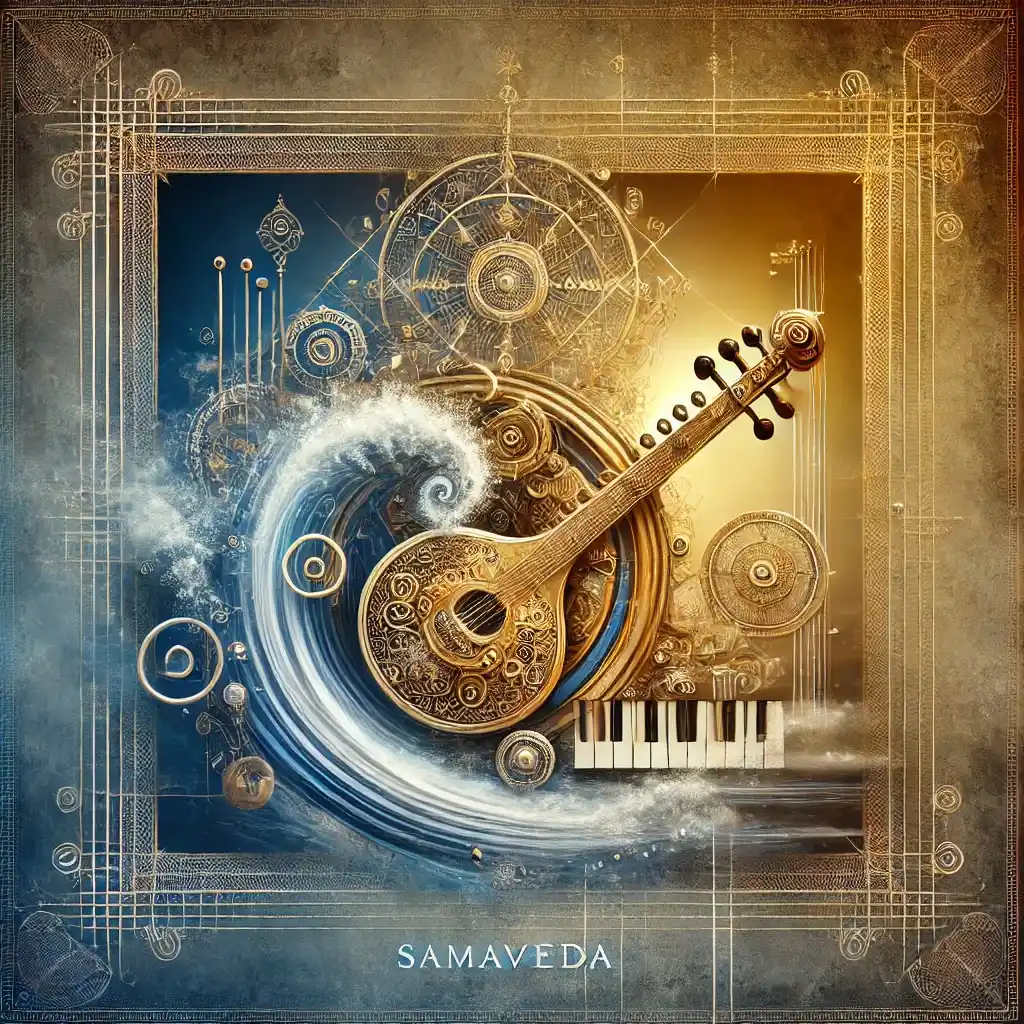
The Vedas
The Samaveda
The Melodic Core of Vedic Tradition
The Samaveda, one of the four canonical texts of Hinduism known as the Vedas, is a crucial part of India's spiritual and cultural heritage. Unlike the other Vedas, the Samaveda is predominantly a book of songs, focusing on the melodic aspect of the hymns. It is often referred to as the "Veda of Chants" because it is intended to be sung rather than recited. This makes it a unique and vital aspect of the Vedic tradition, emphasizing the role of music and melody in spiritual practices.
Origins and Composition
The Samaveda is believed to have been composed around 1200 to 1000 BCE, during the late Bronze Age, in the Indian subcontinent. Like other Vedas, it is attributed to the rishis, ancient sages who are said to have received this knowledge through divine inspiration. The Samaveda consists of 1,875 verses, most of which are derived from the Rigveda, specifically its eighth and ninth books. However, what distinguishes the Samaveda from the Rigveda is not its content but its format—these verses are arranged in a specific order to be sung during sacrificial rituals.
The text of the Samaveda is divided into two main parts:
Purvarcika: The first part, which contains the basic text of the hymns.
Uttararcika: The second part, which contains the verses in a specific melodic format.
Additionally, the Samaveda is accompanied by a set of Brahmanas, Aranyakas, and Upanishads, which provide explanations and philosophical interpretations of the hymns and rituals associated with it.
The Significance of Melody and Chanting
The central focus of the Samaveda is not on the words themselves but on how they are sung. The Vedic rituals were heavily reliant on precise intonation and melody, as it was believed that the power of the mantra lay in its correct vocalization. The hymns of the Samaveda are intended to be sung by the udgatri priests during the soma sacrifices, which were grand ceremonies involving the preparation and offering of the soma drink, a sacred ritual beverage.
These hymns are set to specific meters and melodies, known as saman, and their correct execution is considered essential for the efficacy of the rituals. The Samaveda thus reflects an ancient understanding of the importance of sound and vibration in spiritual practice—a concept that resonates with many modern spiritual traditions as well.
Key Themes and Deities
The hymns of the Samaveda are primarily dedicated to three deities:
Agni: The fire god, who acts as a mediator between humans and gods.
Indra: The king of gods and the god of rain and thunderstorms, often praised for his heroic deeds and strength.
Soma: The personification of the soma plant and its ritualistic drink, associated with the moon and with divine inspiration.
The hymns extol these deities, celebrating their powers and inviting their blessings during rituals. However, unlike the Rigveda, which also delves into philosophical inquiry and cosmology, the Samaveda is more focused on the practical aspects of ritualistic worship through song.
Philosophical and Cultural Impact
While the Samaveda is primarily a liturgical text, its influence extends beyond the realm of ritual. It has had a profound impact on Indian music and cultural traditions. The ancient system of Vedic chanting has influenced various forms of Indian classical music, particularly the tradition of saman singing, which is considered the precursor to Indian classical ragas.
The Samaveda also embodies the idea that sound and music are not merely aesthetic experiences but are deeply connected to spiritual and cosmic order. This understanding has permeated many aspects of Indian culture, where music is often seen as a path to spiritual elevation.
Preservation and Transmission
Like the other Vedas, the Samaveda was preserved through an oral tradition. The exact pronunciation and intonation of the hymns were passed down from generation to generation through rigorous training. This ensured that the sacred chants remained unchanged for millennia, preserving the purity of the Vedic tradition. The text was later written down, but even today, the oral recitation of the Samaveda remains an important part of Vedic study.
Samaveda's Role in Hinduism
In the broader context of Hinduism, the Samaveda is less about theoretical knowledge and more about practice. It is an essential text for understanding the Vedic rituals and the role of music in these ancient ceremonies. The Samaveda's emphasis on sound as a divine force is a concept that continues to influence Hindu worship practices, where bhajans (devotional songs) and kirtans (call-and-response chanting) are integral to religious life.
Conclusion
The Samaveda stands as a testament to the ancient Indian tradition of combining spirituality with music. It highlights the significance of sound in Vedic rituals and offers a unique perspective on the role of music in human life. Even today, the Samaveda's hymns resonate in the practices of Vedic chanting and Indian classical music, reflecting the enduring legacy of this ancient text. As we explore the depths of the Samaveda, we gain insight into the rich tapestry of Indian spiritual and cultural heritage, where the divine and the musical are inextricably linked.

Explore the latest and most popular products available on Amazon, handpicked for your convenience! Whether you're shopping for tech gadgets, home essentials, fashion items, or something special, simply click the button below to view the product on Amazon. We’ve partnered with Amazon through their affiliate program, which means that if you make a purchase through this link, we may earn a small commission at no extra cost to you. This helps support our site and allows us to continue providing valuable content. Thank you for your support, and happy shopping!